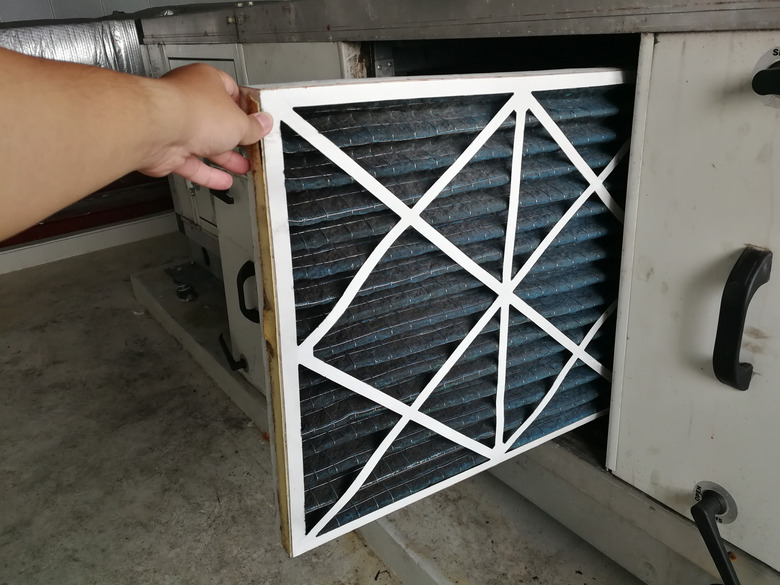What You Need To Know About Furnace Filters
Furnace filters play a vital role in your home's heating system, and changing them regularly is a key element of routine home maintenance. You'll need to know what kind and size of filter your furnace uses to handle this basic HVAC maintenance task. Swapping out the furnace filters is a relatively easy task. It's a good idea when preparing your home for winter or getting ready for the summer cooling season.
Furnace Filters: What to Know
Forced-air furnaces and central air-conditioning systems contain filters to keep the systems running properly. By spending a few bucks and taking a few minutes to change filters on a regular basis, you'll help the system run efficiently, make your house more comfortable and possibly help clean the air. Ignore the filters and you might be in for costly repair bills.
Filters are necessary in HVAC systems because forced-air systems rely on ducts to move the heated and cooled air in the home. When the air returns to the furnace to be conditioned, it contains dust, pet dander and even pollutants like mold spores and bacteria that have to be removed by the filter.
There are two broad categories of filters:
- Basic fiberglass or polyester filters are flat, and they're probably the type filters that came with the furnace. They filter out large particles like dust mites and lint, preventing them from fouling up the equipment. Some furnaces use reusable filters that should be washed and reinstalled.
- Pleated filters are thicker than standard filters and contain more surface area to trap particles. These types of filters can trap very small pollutants like bacteria and mold spores. Some of the more efficient filters can remove virus carriers and smoke.
Selecting Furnace Filters
You need to know the size of the filter, which is its overall dimensions, and the filtration rating if you want the filter to remove pollutants. The filter size is printed on the frame of your existing filter. If there's a problem, take the existing filter to the hardware store or home center when you buy a new one.
The filtration rating is a little more complicated with three common rating systems available. The first was developed by the American Society of Heating, Refrigerating, and Air-Conditioning Engineers (ASHRAE), an independent standards-writing organization. Its system is called MERV, which stands for the Minimum Efficiency Reporting Value. MERV ratings go from 1 to 20, but the best residential filtration is in the 5 to 13 range. Anything above a 15 is used in hospitals and industrial clean rooms. A standard fiberglass filter has a rating of about 4.
If you shop at The Home Depot, you'll find filters labeled with the company's Filter Performance Rating (FPR). It's simpler than ASHRAE's system with ratings that go from 4 to 10. The higher the number the smaller the particles the filter can remove.
The 3M Company, which makes a lot of filters, has its own rating system. It's called the Microparticle Performance Rating (MPR) and runs from 300 to 1900.
Picking the Best Filtration
Confused? You're not alone. Just remember that the higher the number for any system, the smaller the particles the filter can remove. Also, most manufacturers label their products with the types of pollutants the filters can remove. Many use little drawings that indicate things like dust mites, mold spores and the like. And if you look hard enough at the technical data of the filters, The Home Depot and 3M list the corresponding ASHRAE rating for their products.
A word of caution about upgrading to a super-efficient filter. Highly rated products can restrict air flow, which means the blower fan in the furnace has to work harder. Discuss your plans with a qualified heating and cooling technician. He may be able to increase the fan speed to accommodate the new filter. It's also a good idea to have the system tuned up by a pro at least once a year.
Changing Furnace Filters
Equipment manufacturers recommend a changing schedule for their products, and filters usually have an estimate of how long they last on the packaging. Estimates of 30 or 90 days or twice a year are common schedules. But these are based on estimates of ideal situations that may or may not apply to your home. One option is to install a new filter and check it every few weeks. Note when it gets dirty, and set up a schedule based on that. Be sure to install a new filter at the start of every heating season.
To change a filter,
- Turn the equipment off. There should be a control switch near the furnace, or you can turn the thermostat down. Keep the equipment turned off until you are finished to prevent unfiltered air from circulating through the system.
- Remove the door to the filter compartment. This door should be in a space between the return air duct and the body of the furnace.
- Remove the old filter. The size of the filter will be printed on the filter frame.
- Slide the new filter into place. The arrows on the frame should point in the direction of the air flow. Make sure it fits snugly so that air cannot get around it.
- Replace the cover door. Seal the seams with foil tape designed for ducts.
- Turn the system back on.
Furnace filters are one of several items you probably don't change often enough. Changing the furnace filter is an easy homeowner's chore that pays off by helping to keep the system running smoothly.
